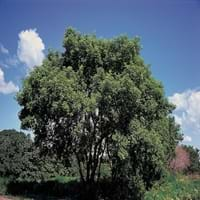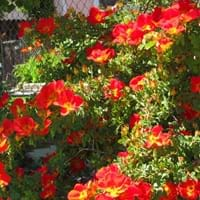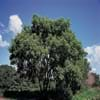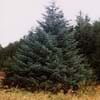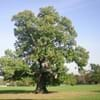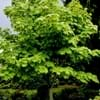Life Span
Perennial
Perennial
Type
Tree
Flowering Plants, Ornamental Plants, Shrubs
Origin
North America, United States, Northeastern United States, Mid-Atlantic United States, Southeastern United States, North-Central United States, Central United States, South-Central United States, Texas, Canada
Not Available
Types
Ash leaves maple, Acer negundo califormicum tehachapi, Acer negundo Flamingo
Not Available
Habitat
Anthropogenic, Floodplains, Forests, Shores of rivers or lakes, Terrestrial
Foot Hills
USDA Hardiness Zone
2-8
Not Available
AHS Heat Zone
8-3
Not Available
Sunset Zone
A2, A3, 1a, 1b, 2a, 2b, 3a, 3b, 4, 5, 6, 7, 8, 9, 10, 12, 13, 14, 15, 16, 17, 18, 19, 20, 21, 22, 23, 24
Not Available
Habit
Oval or Rounded
Clump-Forming
Flower Color
Red, Yellow green, Dark Red
Orange Red, Yellow
Flower Color Modifier
Bicolor
Bicolor
Fruit Color
Green, Tan
Non Fruiting Plant
Leaf Color in Spring
Green, Light Green
Green
Leaf Color in Summer
Green
Green, Dark Green
Leaf Color in Fall
Yellow, Yellow green, Brown
Dark Green
Leaf Color in Winter
Not Available
Dark Green
Leaf Shape
Broadly Ovate
Pinnate
Plant Season
Spring, Fall
Spring, Summer, Fall
Sunlight
Full Sun, Partial Sun, Partial shade
Full Sun, Partial Sun
Type of Soil
Clay, Loam, Sand
Loam, Sand
The pH of Soil
Acidic, Neutral, Alkaline
Acidic, Neutral
Soil Drainage
Average
Well drained
Bloom Time
Early Spring, Spring
Spring, Late Spring, Early Summer, Summer, Late Summer, Early Fall, Fall
Repeat Bloomer
No
Not Available
Tolerances
Wet Site, Pollution, Drought, Soil Compaction
Drought
Where to Plant?
Ground
Container, Ground, Pot
How to Plant?
Rooted stem cutting, Seedlings
Cuttings
Plant Maintenance
Medium
Medium
Watering Requirements
Average Water Needs, Needs watering once a week
Average Water Needs
In Summer
Lots of watering
Lots of watering
In Spring
Moderate
Moderate
In Winter
Average Water
Average Water
Soil pH
Acidic, Neutral, Alkaline
Acidic, Neutral
Soil Type
Clay, Loam, Sand
Loam, Sand
Soil Drainage Capacity
Average
Well drained
Sun Exposure
Full Sun, Partial Sun, Partial shade
Full Sun, Partial Sun
Pruning
Prune every year, Prune in early spring, Prune in late winter, Remove branches, Remove damaged leaves, Remove dead branches, Remove dead leaves, Remove dead or diseased plant parts
Remove damaged leaves, Remove dead branches, Remove dead leaves
Fertilizers
All-Purpose Liquid Fertilizer
All-Purpose Liquid Fertilizer
Pests and Diseases
Red blotch
Beetles, Black Spot, Caterpillars, Downy mildew, Mosaic viruses, Powdery mildew, Rust, Scale insects, Thripes
Plant Tolerance
Drought, Pollution, Soil Compaction, Wet Site
Drought
Flower Petal Number
Not Available
Double
Edible Fruit
No
Not Available
Foliage Texture
Medium
Medium
Foliage Sheen
Matte
Glossy
Invasive
Sometimes
Not Available
Self-Sowing
Yes
Not Available
Attracts
Aphids, Birds, Squirrels
Birds, Butterflies
Allergy
Asthma, Runny nose, Skin irritation
Rash
Aesthetic Uses
Bonsai
Showy Purposes
Beauty Benefits
Not Available
Not Available
Environmental Uses
Air purification, Shadow Tree, Wildlife
Air purification
Medicinal Uses
Antidote, Antiemetic
Not Available
Part of Plant Used
Flowers, Fruits, Leaves, Seeds
Flowers
Other Uses
Can be made into a herbal tea, Decoration Purposes, Edible syrup, Used as essential oil, Used As Food, Used as Ornamental plant, Wood log is used in making fences
Oil is used in perfume, soaps, creams, etc.
Used As Indoor Plant
No
Yes
Used As Outdoor Plant
Yes
Yes
Garden Design
Screening / Wind Break
Container, Cutflower, Feature Plant, Foundation, Mixed Border, Topiary / Bonsai / Espalier
Botanical Name
ACER negundo
Rosa foetida
Common Name
Ash-Leaved Maple, Boxelder
Austrian briar, Persian yellow rose, Austrian copper rose
In Hindi
Boxelder tree
Austrian copper rose
In German
Boxelder Baum
Die Gelbe Rose, Fuchs-Rose, Wachs-Rose, Persische Gold-Rose, Austrian Briar
In French
arbre boxelder
Le rosier fétide
In Spanish
árbol boxelder
Rosa foetida
In Greek
κουφοξυλιά δέντρο
Austrian copper rose
In Portuguese
árvore Boxelder
Rosa fétida
In Polish
Boxelder drzewo
Róża żółta
In Latin
Boxelder ligno
Austrian copper rose
Phylum
Magnoliophyta
Magnoliophyta
Class
Magnoliopsida
Magnoliopsida
Family
Aceraceae
Rosaceae
Clade
Angiosperms, Eudicots, Rosids
Not Available
Tribe
Not Available
Not Available
Subfamily
Not Available
Not Available
Number of Species
Not Available
Not Available
Season and Care of Boxelder and Austrian Copper Rose
Season and care of Boxelder and Austrian Copper Rose is important to know. While considering everything about Boxelder and Austrian Copper Rose Care, growing season is an essential factor. Boxelder season is Spring and Fall and Austrian Copper Rose season is Spring and Fall. The type of soil for Boxelder is Clay, Loam, Sand and for Austrian Copper Rose is Loam, Sand while the PH of soil for Boxelder is Acidic, Neutral, Alkaline and for Austrian Copper Rose is Acidic, Neutral.
Boxelder and Austrian Copper Rose Physical Information
Boxelder and Austrian Copper Rose physical information is very important for comparison. Boxelder height is 2,438.40 cm and width 1,524.00 cm whereas Austrian Copper Rose height is 150.00 cm and width 170.00 cm. The color specification of Boxelder and Austrian Copper Rose are as follows:
Boxelder flower color: Red, Yellow green and Dark Red
Boxelder leaf color: Green and Light Green
Austrian Copper Rose flower color: Orange Red and Yellow
- Austrian Copper Rose leaf color: Green
Care of Boxelder and Austrian Copper Rose
Care of Boxelder and Austrian Copper Rose include pruning, fertilizers, watering etc. Boxelder pruning is done Prune every year, Prune in early spring, Prune in late winter, Remove branches, Remove damaged leaves, Remove dead branches, Remove dead leaves and Remove dead or diseased plant parts and Austrian Copper Rose pruning is done Remove damaged leaves, Remove dead branches and Remove dead leaves. In summer Boxelder needs Lots of watering and in winter, it needs Average Water. Whereas, in summer Austrian Copper Rose needs Lots of watering and in winter, it needs Average Water.
